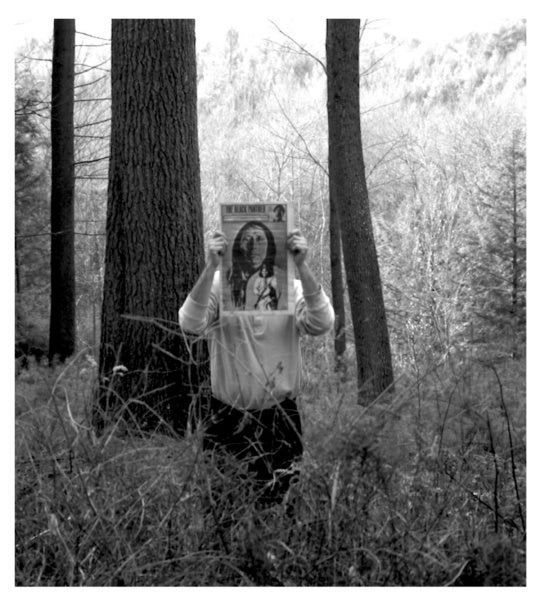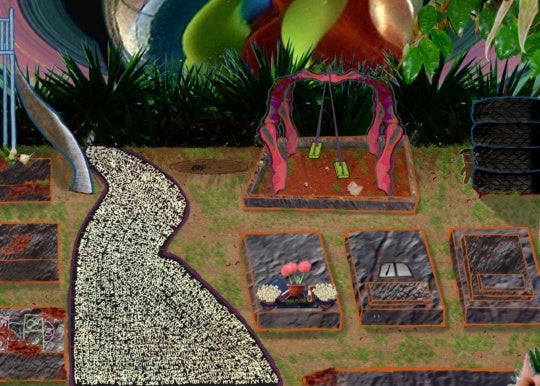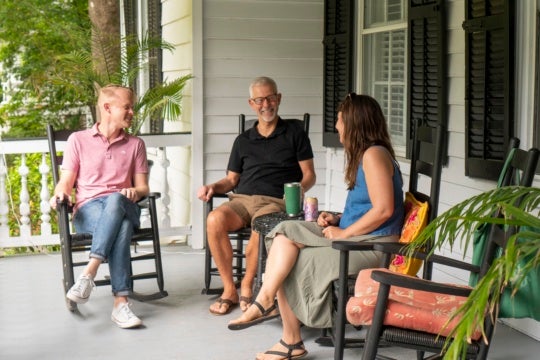
The town of Gulfport, Florida, about 7 miles from downtown St. Petersburg, at the south end of the St. Petersburg/Clearwater Peninsula, boasts a diverse restaurant and arts scene. Though many spaces are devoted to crafts and tourist art, one gallery in town has committed to showing contemporary art in month-long exhibitions. In 2015 Randy Loyd, president of Space Machine and Engineering, bought a bungalow at 3007 Beach Boulevard South, moved in, and designated the front part as the Portspace Gallery. In January, the Contemporaries, a contemporary art group at the Museum of Fine Arts St. Petersburg, of which I am a member, visited the gallery to hear three points of view about contemporary art from Loyd, Portspace curator Will Douglas, and artist Jenn Miller. The lively question and answer session at the end piqued my interest in interviewing Loyd.
Ann Gurley Rogers: How did you become interested in contemporary art?
Randy Loyd: Contemporary art has been a life-long interest—probably because of my family’s interest and because we went together to museums and galleries. Also I have traveled a lot, first with my family when I was young and then as an adult I have continued to travel. In the past several years, I have traveled to New York to look at art and I regularly visit galleries in St. Petersburg.
AGR: Tell me about your art collection.
RL: Over the years, I have supported my friends who are artists by buying their work, I have purchased several pieces of Haitian work from a gallery in Key West, and since the gallery opened, I have acquired art from our exhibiting artists.

AGR: What made you decide to move to Gulfport and open Portspace?
RL: I was looking for a new place to live away from St. Petersburg. Seeing the space in this house gave me the idea to live here and have a gallery in front. I felt that this would be an experiment in a different way to live—sharing a public space in my home. I talked with my friends who were involved in the arts. They suggested that I could hire an artist or an art student to be the curator.
AGR: So is your biggest expense paying your part-time curator? I suppose limiting your expenses in that way would give you the freedom to take a chance on an artist with an unproven track record and not worry about how much art you might sell. Even so, have you been satisfied with the gallery’s sales record?
RL: Yes, but I know that we need to improve. The gallery space itself needs to demonstrate that transactions happen here. My first idea is to put in a desk as a signal that this is a place where business takes place. But I want to keep in mind the comfort level of our customers.
AGR: Who are your customers?
RL: We get both locals and outsiders—particularly friends and colleagues of the exhibiting artists. We have hard-core art lovers and just regular people.
AGR: How do you distinguish yourself as a venue that exhibits contemporary art in a town that is known for craft and tourist art?
RL: We are on the main drag and on a corner. Soon we’ll have sculptures outside both from rotating exhibitions and from my personal collection so that we can start the art experience even before people get inside.

AGR: The other stated goal of the gallery is to foster discussions about contemporary art practices. Once people are inside, how do these discussions get started?
RL: In a small space, it is easy to spot me, the exhibiting artist, or our curator during an opening reception and start or join a conversation. The conversations between the hard-core art lovers and regular people have been interesting; actually, that is what I think people enjoy the most here.
AGR: Aside from the visit by the Contemporaries at the MFA St. Petersburg, have you had other groups visit Portspace?
RL: Because Gulfport is small, it is essential that I as an individual and Portspace as a business are viewed as an integral part of the community. It’s easy to reach out to neighbors and make our space available. Doing so gets people through the door and in front of art; that’s a first step. Last night there was a group in for meditation.
AGR: Do you get involved in the curatorial process, and what do you hope for?
RL: Yes, I’ve always been impressed with how Basquiat was discovered at a young age, and I would like to think that I could contribute in a meaningful way to an artist’s career by giving them perhaps their first solo show.
AGR: Do you think that your gallery is more likely to be successful because you have a business background instead of formal training as an artist or an arts administrator?
RL: I think that it helps that I am a realist and analytical rather than emotional.
AGR: In other words, you know that it is a mistake to fall in love with a deal?
RL: Yes, exactly.
Ann Gurley Rogers is a freelance writer and independent curator living in St. Petersburg, Florida. She has been writing about the arts since the mid-1990s.




